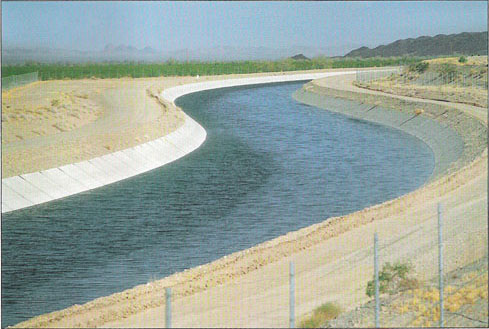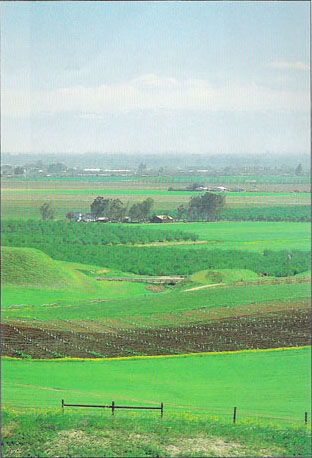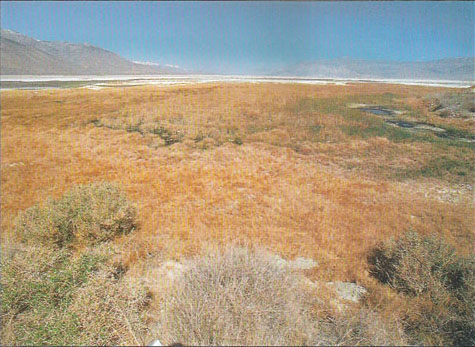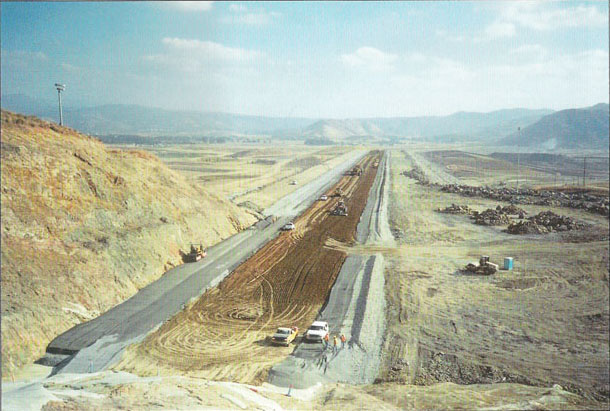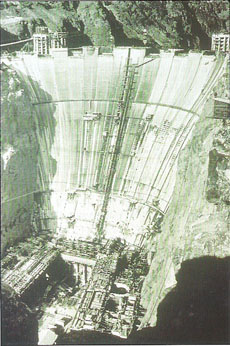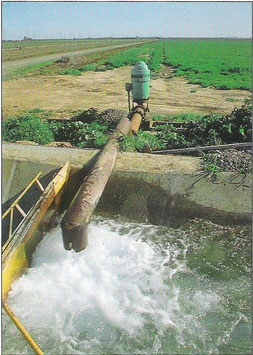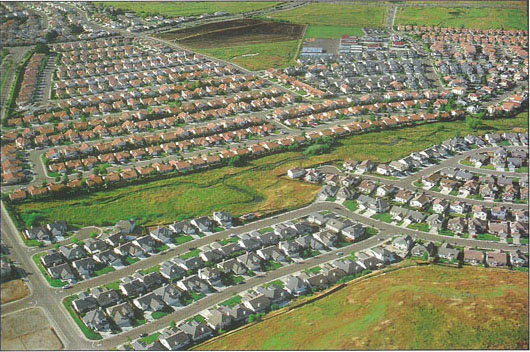All Issues
The price of water: Market-based strategies are needed to cope with scarcity
Publication Information
California Agriculture 54(2):56-63. https://doi.org/10.3733/ca.v054n02p56
Published March 01, 2000
PDF | Citation | Permissions
Abstract
Growing population and environmental concerns are increasing the demand for California's water resources. Historically, the state has dealt with shortages by expanding supply. In the coming years, new strategies will be required to allocate water among existing and emerging uses and to create additional supplies by nontraditional means. Three techniques will form the foundation of water management in the next era: water markets, water-use efficiency and active conjunctive use. Such methods establish prices for water that more accurately reflect costs, encouraging conservation and more efficient use patterns.
Full text
California's water supply and allocation systems are under increasing pressure from a variety of spheres. The state's population is growing rapidly, and with it the demand for water. Further, the electorate's heightened environmental sensitivity is creating new demands to increase the amount of water remaining in streams and rivers.
For the first 70 years of water development in California, conflicts over water were dealt with largely by expanding supply through storage projects and transferring water from region to region via pipes, canals and aqueducts. With the high and increasing cost of building new dams and reservoirs, the environmental damage they inflict, and the government's newfound mandate to balance its budget, the construction of new facilities alone is unlikely to solve current problems.
The state's water-distribution and pricing systems remain highly complicated and variable. More than 2,800 local agencies provide water service to 35 million people and 8.7 million irrigated acres of farmland (USDA 1999), while roughly 75% to 80% of the state's water goes to agriculture. All users must vie for the limited resources available in the state, with diversions from the Sacramento-San Joaquin and Colorado systems being the most important. Consequently, water prices vary widely by jurisdiction; even within agriculture prices range from less than $10 per acre-foot to well over $100 at the retail level. If California doesn't restructure its water-management system in the coming decades, our notorious “water wars” will extend well into the 21st century.
During the 20th century, conflicts over water were usually resolved by expanding supply through storage projects and transferring water in pipes, canals and aqueducts. In the 21st century, the construction of new facilities alone is unlikely to solve water supply problems. Economists recommend water markets to encourage more efficient use.
New strategies are needed to rationalize the allocation of water among existing and emerging uses and to create additional supplies by nontraditional means. Three techniques will form the foundation of the next era of water management in California: water markets, efficient water use and active conjunctive use.
Water transfers
Economists have long advocated the use of water markets to reallocate existing supplies and provide incentives for efficient use. To date, water trading in California has taken three forms. First, there have been intermittent, statewide “crisis” markets, notably the water banks during the drought of the early 1990s. Second, there have been some large-scale, long-term transfers between agriculture and urban areas. Finally, there are active spot markets within agriculture, especially in the San Joaquin Valley where users of developed water supplies trade annual entitlements.
Past experience with water trading in California, coupled with theoretical arguments developed mainly by economists, demonstrate the benefits of allocating water among competing uses on a market basis. Currently, water is allocated by a priority or “queuing” system, in which some users have historically determined “senior” claims on available supplies. By contrast, a market allocates supplies on the basis of economic values, or relative willingness to pay. In the latter system, water is allocated to those users who make the most productive use of it, that is, those with the highest willingness to pay.
Mitigating conflicts.
Modeling by Sunding et al. (2000) shows that water trading can drastically reduce the cost of reallocating water from agriculture to the environment. If a market mechanism is used to reallocate 800,000 acre-feet annually from a large body of growers in the Central Valley, farm profits are reduced by about $10 million and farm sales drop by approximately $19 million per year. Without water trades, annual profits are reduced by nearly $45 million and annual revenues fall by around $85 million. These striking results follow from the fact that seniority of water rights is not closely correlated with water productivity. The current allocation system reduces the supplies of junior users first, even though these rights holders are often highly productive.
This modeling demonstrates that the overall level of a water-supply cut is not the only factor affecting the social cost of protecting water quality. Rather, the impacts depend critically on the extent of water trading. As has been found in other contexts, such as pollution permit trading, markets can achieve environmental objectives at minimum cost to the economy.
This result follows from two basic observations. First, water markets allocate the burden of reducing diversions to the users with the lowest productivity. In this sense, trading makes a high level of environmental quality compatible with a high level of economic productivity. Second, governmental agencies (perhaps in conjunction with nonprofit organizations) may actually purchase needed environmental supplies from willing sellers. This “purchase fund” concept has taken hold in other areas of the West, and is also the basis for popular land-conservation efforts such as the Conservation Reserve Program.
Coping with drought.
Water trading can provide an important safety valve in times of drought. Because of disparities in the value of water within the agricultural sector, and also between agricultural and urban uses, water trading is especially important when surface supplies are low. The queuing system by which water is allocated in the state does not currently match water productivity, meaning some of the most productive areas are the first ones cut during a drought. Spot trading (markets where water is rented for a year at a time with no change in the underlying water rights) helps junior rights holders cope with scarcity by buying water while compensating those who sell it.
Thousands of water trades are completed each year in the Westlands Water District, demonstrating the viability of water marketing when administrative barriers are lowered.
There is an interesting connection between the scope of water trading and the value of new water-supply and storage facilities. The value of these capital projects is highest when water is inefficiently allocated and when the new water is provided to those with low-priority water rights. This is essentially the situation faced by CALFED planners as they grapple with how to configure the state's water infrastructure for the next generation. Cities and agricultural users in the San Joaquin Valley clamor for new water supplies to meliorate the lack of water-supply reliability. A more active and broader water market would take some pressure off users most likely to be cut in a drought, and would reduce the value of building new facilities.
These effects are significant: a recent study by Moreno et al. (1999), sponsored by the CALFED program, shows that water trading can reduce the value of new storage facilities by half. Emphasizing water trading as a means of coping with water-supply fluctuations would benefit federal and state taxpayers — who will foot most of the bill for new facilities — and would result in a more flexible and environmentally sensitive water-delivery and storage infrastructure.
Misconceptions about water trading.
An analytical study of a potential water market in California (Vaux and Howitt 1984) showed that an inter-sectoral water market could bring California's water supplies and demands into equilibrium until 2020 with comparatively small quantities traded (12%). The basic intuition behind this finding is that there is a large disparity between average and marginal values of water, particularly in the urban sector.
While urban average values of water are undoubtedly high, and well in excess of average values in all but a few agricultural applications, marginal values drop off rapidly. A number of studies document a very low price elasticity of demand for residential and industrial water use. Marginal values of water used in agriculture do not decline nearly so rapidly. Within the Central Valley, for example, more land can be brought into production if irrigation water becomes available.
In an economic equilibrium, only a relatively modest amount of water must be reallocated from agriculture to urban areas to bring California's water system into economic balance. Adoption of widespread intersectoral water trading in California will not turn the Central Valley into Owens Valley, which (until quite recently) lost virtually all of its water to diversions by the city of Los Angeles.
Economic impacts.
The impact of water trades on rural communities in selling regions are a notable source of objection to water markets in California. Conceptual analysis of these community impacts is widespread, but quantitative evidence of the extent of regional economic impacts is hard to find. Howitt et al. (1994) used both primary surveys and simulation techniques to measure the county-level income changes attributable to drought-bank water sales. The results from Yolo and Solano counties, which supplied 25% of the water sales to the bank, showed a 3% to 7% average reduction in income for county residents who did not sell their water. These low average third-party costs mask considerable variation among individuals within the regions studied.
The permanent transfer of water rights from a region may lead to substantial impacts on the local economy. This type of sale is almost unknown in California, but Howe et al. (1990) show losses in farm value of 10% to 21% in regions of the Arkansas Valley in Colorado. Spot or option transactions, in which water is traded intermittently, mitigate these impacts in three ways. First, under a spot market or an option contract the water remains in farming for the majority of the years, keeping the seller on the farm and providing a source of income for local agricultural input suppliers.
Second, since the farmer is still active and residing in the region, the stream of payments adds to regional income. Finally, the construction of market institutions and negotiation of option contracts provides an opportunity to negotiate third-party compensation where appropriate. Where needed, environmental-impact documentation also gives these stakeholders a role in the process.
Early in the last century, water was diverted from Owens Lake to Los Angeles. In recent years, an environmentally sensitive public has pushed for the return of water to depleted lakes, rivers and streams.
The future of water markets.
A number of regional water markets have emerged in California. They are local, as opposed to statewide or otherwise due to legal, economic and conveyance constraints on transfers. However, despite their limited geographic scope, trading can be quite active within these markets.
A good example of local water marketing occurs in Westlands Water District, located on the western side of the San Joaquin Valley (Carey et al. 2000). Westlands is the largest district in the Central Valley Project (CVP), covering nearly 600,000 acres and including approximately 800 farms. Every year, farms in Westlands complete thousands of trades involving hundreds of thousands of acre-feet of water.
Westlands' contract with the U.S. Bureau of Reclamation entitles it to 1.5 million acre-feet of water from the CVP in a full-delivery year. The actual amount received by the district has been much less in recent years due to a combination of drought and environmental regulations that have dedicated more water to in-stream flows (table 1). For example, during dry years of the early 1990s, Westlands received 50% of its allocation in 1990 and 25% in both 1991 and 1992. In contrast, the district received 100% of its allocation in the wet year of 1995, and 95% in 1996.
The volume of water traded in Westlands was greater in the wet years of 1995 and 1996 than in the dry years of 1993 and 1994. However, the volume traded as a share of the annual CVP water supply, and the number of trades made, were greater in 1993 and 1994. It is impressive to note that in some years, farmers in Westlands traded more than half of their CVP entitlement within the district. This trading behavior illustrates how viable water marketing can be when administrative barriers are lowered. The Westlands experience is a glimpse into the future as it is the best example of active, routine and low-cost water trading that exists in California.
Rational conveyance procedures.
A serious problem induced by the development of any type of market is the ability to wheel water at a given time. More so than in most western states, the water conveyance system in California is a patchwork of natural watercourses, canals and dams. A complex mix of private and government investment has developed this network. Invariably, the ability to transfer water is tied to ownership of the supply and rights to ownership of its distribution in a given region.
The problem of freeing transfer capacity is as difficult as developing supply sources. The agencies that finance and develop water-conveyance facilities regard them as their exclusive domain, and conveyance capacity is often used to confer de facto monopoly rights on water trading. Clarification of the rights of outside water buyers to purchase transfer capacity is required for a more functional water market. A practical difficulty in defining these rights is to define the transfer capacity that should be offered for sale by an agency in a given time period.
While the quantity of surface water conveyed in drier years is often less than baseline levels, conveyance capacity is also reduced due to environmental considerations such as pumping restrictions in the Delta. The California water code addresses reimbursement of conveyance costs, but so far there has been little success in opening access to conveyance facilities. Ideally, water-conveyance systems would be operated by an entity separate from the one that distributes water among agencies and approves transfer applications.
Water-use efficiency
Future water policy should be based on economically efficient use. Economic efficiency is achieved when the marginal benefit of water application (including groundwater replenishment) equals its cost (including environmental impacts), and when values are equated across uses of water (factoring in the cost of transporting water from one setting to another). Efficiency of agricultural water use is achieved by various means, including the adoption of irrigation technology, fallowing land and crop shifting. Urban efficiency can be achieved by similar techniques. This economic definition of efficiency contrasts with the typical engineering/hydrologic view, which is defined at the farm level as the ratio of evapotranspiration to applied water, or at the regional level, by factoring in the future use of deep percolation of water into aquifers.
President Roosevelt dedicated the Hoover Dam, below, in 1935. In March 2000, the 4,500-acre Diamond Valley Lake Reservoir in Hemet was dedicated, doubling Southern California's drinking-water storage capacity, above. While new storage may be necessary in the future, other techniques such as water trading, efficiency improvements and conjunctive use can help bring California's water economy into balance.
Water-allocation institutions.
When considering economic water-use efficiency, it should be emphasized that current use patterns are not inefficient because farmers and other users are acting unreasonably or are simply ignorant of recent advances in technology. Rather, farmers select irrigation methods and cropping patterns to maximize profit given water price and availability, and a host of other relevant economic factors such as the price of labor and crop outputs and environmental conditions such as microclimate and soil quality. A large body of economic research has demonstrated conclusively that farmers consider the price of water when making water-use decisions, and that altering price changes behavior in predictable ways (Green et al. 1996).
Water pricing.
These observations suggest that efficiency can be improved by changing economic incentives. Perhaps the most pressing need is to alter the way water is priced in California, at both the wholesale and retail levels. Currently, the vast majority of water users in the state pay for the average cost of treatment and storage, but pay nothing for the water itself. Unless water itself has a price, it is used as if it has no value. One of the chief benefits of a water market is that it establishes a price for water and gives all users a signal about the value of water in other settings.
Reform of water-allocation institutions should recognize existing property rights and reward current users for altering their behavior. For example, adjacent landowners who pump groundwater and other affected parties have made capital investments conditional on current water-use patterns, and some may be affected by the move to a more market-based allocation. There are numerous ways to protect these users. One of the simplest alternatives is to concentrate on the development of “free trade zones” or regional spot water markets. Regions would be defined so that groundwater impacts would be minimal, and the state would precertify trades within the zones. Other conditions could be added by the state, such as a limit on the number of times a rights holder could sell in a given period (i.e., once in 4 years or twice in 5 years).
Groundwater banking would allow water to be stored underground in wet years and pumped for use in dry years. An aggressive program, involving conjunctive use, could produce an additional 900,000 acre-feet per year.
Such free trade zones would be analogous to the highly successful water market within Westlands Water District. Buyers and sellers would not need environmental documentation to consummate these trades, because state agencies would have already defined the trading zones and acceptable trading frequencies. These regional markets would significantly expand the scope of trading in California while protecting the legitimate interests of third-party groundwater users.
Additional reforms.
Of course, not all water trades can or should fit into the precertification category. For other trades, buyers and sellers would be responsible for obtaining administrative approval, including environmental documentation. Another useful reform would be to move from a situation where groundwater pumpers have veto power over proposed trades, as is currently the case, to one in which monetary compensation is required to settle third-party impacts. These claims could be resolved by arbitration or administrative hearing, and development of standard impact-assessment models by state agencies could facilitate the process.
Economic analysis suggests that there should be a threshold for impacts above which compensation would be paid. Economists have concluded that, generally speaking, it is inefficient to indemnify agents against every external harm, no matter how trivial (Cooter 1985). Society's needs change over time, and the allocation of resources should change accordingly. If compensation is always granted for groundwater impacts, then third parties have an incentive to overinvest in water use. However, not compensating for groundwater impacts is also inefficient because third-party ground-water users are discouraged from investing in water. The challenge is to define a compensation rule that strikes an appropriate balance between maintaining a flexible water allocation while protecting legitimate third-party interests. A private-market solution to this problem would be for potential water sellers to purchase options from adjacent groundwater users entitling the holder to deplete the aquifer for a prespecified payment.
Storage and conjunctive use
While reallocating water to increase economic efficiency is an important step toward resolving the state's water-management crisis, increasing storage capacity and yield is almost certainly desirable given the expected increase in the state's population and growing demand for California's farm products. An important question is what type of storage facilities should be built, how many and at what capacity.
Groundwater banking projects have great promise in California. More active conjunctive management of surface water and groundwater can reallocate water from wet to dry years to smooth consumption, and some types of projects can actually increase available supplies. A variety of groundwater projects might be constructed in the state.
The simplest type of project is a groundwater bank, in which water is stored underground in wet years and pumped for use in dry years. One consequence of the groundwater overdraft that has occurred for decades in the Central Valley is that a number of sites could be used to store water in empty aquifers. In a banking arrangement, water would be procured from willing sellers in wet years, stored, and then pumped in dry years. The economic value of this type of storage project is that water is scarcer, and hence more valuable, in dry years than in wet years. Such projects also have relatively modest costs and can be privately financed and operated.
A more ambitious type of activity is the active conjunctive-use scheme recently proposed by the Natural Heritage Institute (1998). Under the NHI proposal, aquifers would be managed together with surface reservoirs in the following way: during the summer months, water would be withdrawn from surface reservoirs and transferred to groundwater banking sites. The surface reservoir would then have greater capacity and additional flows would be captured. In this way, groundwater storage sites serve as an adjunct to existing surface reservoirs, increasing the overall yield of the system. NHI estimated that a program of active conjunctive use and reservoir reoperation could produce an additional 900,000 acre-feet of water for consumption in an average year.
More than 2,800 local agencies provide water service to 35 million people and 8.7 million acres of irrigated farmland in California. Whether measured by gallon or acre-foot, urban residents pay significantly more for their water than agriculture.
The main benefit of conjunctive use is that it is usually cheaper to store water underground than in a surface reservoir. Further, there are typically fewer environmental impacts from groundwater storage than the construction of dams and reservoirs. There are also some drawbacks. Chief among them is the fact that water must be withdrawn from underground sites by pumping, and it may be difficult and costly to extract water fast enough to meet fluctuating demands. Groundwater storage and withdrawal can also impact adjacent landowners, by changing the level of the water table and altering the quality of groundwater. Nonetheless, conjunctive use is a promising technique and more work should be done to test the concept in California.
Future in focus: The value of water
Resolution of California's water-management crisis requires that decision-makers abandon the makeshift centralized planning paradigm in which water planning is needed to address a perceived disparity between fixed demands and supplies. Basic economic concepts teach that demand and supply are relative concepts and depend on the price of water. The widely different valuations of water observed in California today reflect the fact that most users pay only for conveyance and treatment (at a subsidized rate), and pay nothing for the water itself. An important benefit of water trading is that it establishes a value of water. This price gives users a signal about the value of water in alternative uses and encourages efficient use patterns and conservation. The equilibrium value of water also gives public and private investors information about what new supply projects should be built.
Some increases in supply may well be a part of the efficient resolution of California's current water conflicts. New storage facilities may be an important tool available to environmental managers in their efforts to improve aquatic habitat. But other techniques for allocating and storing water, including water trading, efficiency improvements and conjunctive use, are needed to bring California's water economy into balance.




